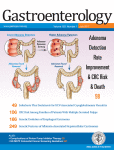 A diabetes researcher who sued a publisher to protect several papers from being retracted recently received his 13th, in a prestigious gastroenterology journal.
A diabetes researcher who sued a publisher to protect several papers from being retracted recently received his 13th, in a prestigious gastroenterology journal.
Mario Saad, based at the University of Campinas in São Paulo, Brazil, has had a string of retractions over the past few years, including four in Diabetes after he lost a legal battle with the American Diabetes Association.
The latest retraction appears in Gastroenterology, citing possible image duplication. Saad is second-to-last author on the 2012 paper.
According to the retraction notice, the journal investigated data in several figures, and believes some were duplicated. The authors explained that the duplications resulted from inadvertently using wrong blots; still, the editors chose to retract the paper after determining they no longer had confidence in its conclusions.
Here’s the retraction notice for “Obesity-Induced Increase in Tumor Necrosis Factor-α Leads to Development of Colon Cancer in Mice:”
This article has been retracted at the request of the Editor-in-Chief and Deputy Editor-in-Chief following an investigation into the data that were presented in several figures within the article.
A number of images used in this article are believed to be duplicated images. The authors stated that they inadvertently inserted images of the wrong blots in several of the figures, resulting in the duplications; however, they did not address all of the concerns raised. Because the editors were no longer confident in the conclusions of the article based on these incorrect data, a decision was made to retract the paper.
All authors have been notified of this decision. The University of Campinas (UNICAMP) in São Paulo, Brazil was contacted regarding these concerns, but to date the journal has received no response.
The paper, on which Saad is second to last author, has been cited 32 times, according to Clarivate Analytics’ Web of Science.
We contacted Saad, who told us
[I] am not responsible or the correspondent author of this manuscript.
We contacted corresponding author Jose B.C. Carvalheira, also at the University of Campinas, and will update if he responds.
The paper has been questioned on PubPeer. Two years ago, a commenter highlighted possible duplication in several Western blots. Another commenter said he or she contacted the journal to inform the editors of the issues.
Like Retraction Watch? Consider making a tax-deductible contribution to support our growth. You can also follow us on Twitter, like us on Facebook, add us to your RSS reader, sign up on our homepage for an email every time there’s a new post, or subscribe to our new daily digest. Click here to review our Comments Policy. For a sneak peek at what we’re working on, click here.
> the editors chose to retract the paper after determining they longer had confidence in its conclusions.
I think you mean “they *no* longer”.
Fixed — thanks.
I’m old school, but still believe what I was taught even before there were formal ethics training requirements.
All authors are responsible for all the content of any paper of which you are an author.
No this doesn’t mean that you are responsible for the misconduct of others.
What it does mean is that you are responsible for cleaning of their mess when it is discovered.
Proper response is not “[I] am not responsible or the correspondent author of this manuscript.”
Proper response is, “just as soon as I learned of the errors or misconduct I worked tirelessly with the editors to correct or retract the paper and protect the integrity of the scientific literature.”
Indeed, authorship means responsibility for any misconduct found implying an active role to set the record straight also when it concerns a co-author. Good point, which could be added to the requirements for authorship.
The authors stated that they inadvertently inserted images of the wrong blots in several of the figures,
“We inadvertently spliced blots together, flipped them horizontally to fill different roles, and changed them in size and contrast level to look different.”
One of the replicated images is the famous “Wandering Western blot” that appears to be handed around UNICAMP researchers like a shared lollipop.
https://forbetterscience.com/2016/02/25/the-duodecuplication-of-a-wandering-western-blot/